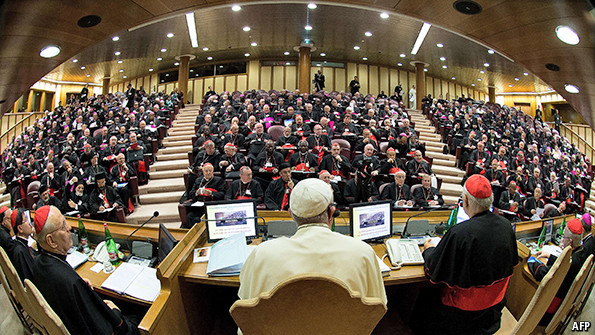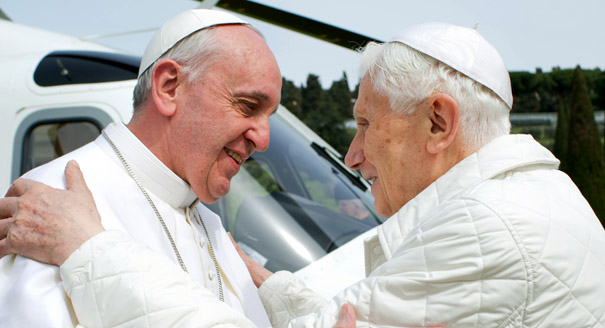The Mid-Term Report for the meeting of the Synod of Bishops on the family just came out. For the most part, it has been well received (see the New York Times and The Economist for example). While I am typically suspicious of overly good (and overly bad) press, in this case, I think it signals a willingness to listen to what the church is saying. The Synod’s approach in the report is key. As I read it, the approach has two parts.
Gradualism
The report calls for “gradualism” (which it mentions three times in sections 13, 17, 47). It is an approach that starts with the current state of things and moves toward improvement. In marriage it is meant to begin with the cultural context. As the report notes, this involves individualism, economic strains on the family, polygamy, cohabitation, single parenthood, divorce, and violence (sections 5-8). Ultimately, this beginning is not a condemnation but trying to find the goodness in people’s situation, the ways their relationship reflects sacramental marriage. For example, in section 22 the report states:
In this respect, a new dimension of today’s family pastoral consists of accepting the reality of civil marriage and also cohabitation, taking into account the due differences. Indeed, when a union reaches a notable level of stability through a public bond, is characterized by deep affection, responsibility with regard to offspring, and capacity to withstand tests, it may be seen as a germ to be accompanied in development towards the sacrament of marriage.
The idea is not to stop there though but to move people toward even greater good and greater holiness. The report makes clear that the end is conversion into a life in Christ (29-33). While gradualism might sound new, the report makes it clear that it was the approach taken at Vatican II on ecumenism and non-Christian religions where “‘although many elements of sanctification and of truth are found outside of its visible structure … these elements, as gifts belonging to the Church of Christ, are forces impelling toward Catholic unity’ (Lumen Gentium, 8).” (section 17)
Action not Theory
This movement to begin with the good held in common and move toward the greater good calls for actions. This is the second part of the approach that the report sets out. It rejects an approach that would “stop at an announcement that is merely theoretical and has nothing to do with people’s real problems.” (section 28) Instead, there must be an approach that concretely helps and moves people.
So, the document calls for more effectively integrating marriage into the other sacraments (section 34), engaging in post-wedding day catechesis (section 35), working with couples who are in civil marriages or cohabitating relationships to strengthen their relationships (sections 36-38).
This action must also clearly attend to those that are suffering. The report notes in particular those that are divorced and remarried. The report seems to affirm Walter Kasper’s approach to allow divorced and remarried to receive communion in particular cases, after a period of penance, and at the local level but called for further research on the topic and more discussion of the issue at the next meeting in 2015. (See sections 47-48.)
Finally, while not changing its stance on homosexuality, the Synod stated that, “The question of homosexuality leads to a serious reflection on how to elaborate realistic paths of affective growth and human and evangelical maturity integrating the sexual dimension.” (Section 51) While not stating specifics, it was a declaration that the “law of gradualism” should be applied to homosexuality as well.
The report’s focus is in recognizing a new way to approach marriage in family. It is an approach that focuses on the good and works from there. The specifics of the next report will matter. While many would have (and already have) ignored an approach that is judgmental or focuses on divisions, this approach emphasizes the good, builds on it, in hopes that the “good” news of Christ might better be heard. Let’s pray for it to work.





